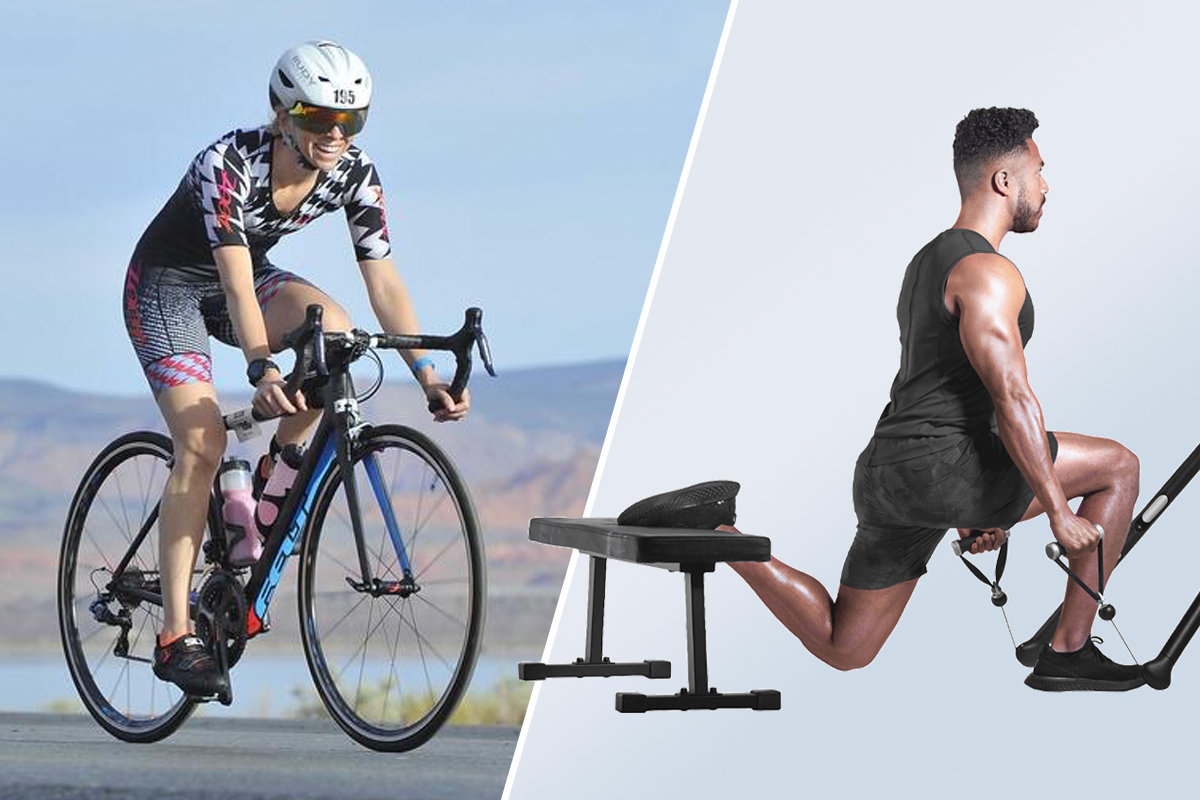Becoming a good cyclist typically takes 1-2 years of consistent training and practice. Developing the necessary skills and stamina requires regular dedication and effort.
Cycling is a popular and effective form of exercise that offers numerous health benefits. Whether you’re a beginner or looking to improve your skills, becoming a good cyclist takes time and dedication. In order to reach a proficient level, it typically takes 1-2 years of regular training and practice.
This includes building endurance, mastering bike handling techniques, and developing strength. However, with determination and the right approach, anyone can become a competent cyclist. In this guide, we’ll explore the key factors that contribute to becoming a proficient cyclist and offer tips to help you accelerate your progress. Whether you’re a casual rider or aspiring to compete, mastering the fundamentals will lay a solid foundation for your cycling journey.
Basics Of Cycling
Becoming a good cyclist is a gradual process that requires a solid foundation in the basics of cycling. Whether you’re a beginner or have some experience, it’s important to understand the fundamentals to improve your skills and ride safely. In this article, we’ll dive into the key aspects of cycling that will help you on the journey to becoming a proficient cyclist.
Choosing The Right Bicycle
When it comes to cycling, it all starts with choosing the right bicycle. Your bike should be suitable for your intended riding style and the terrain you plan to conquer. Consider factors like your height, physical fitness, and the type of cycling you want to pursue – be it road cycling, mountain biking, or commuting.
- Assess your riding goals and determine the type of bicycle that aligns with your needs.
- Consider the frame material, such as steel, aluminum, carbon fiber, or titanium.
- Think about the bike’s features, including gear systems, brakes, and suspension, making sure they match your cycling style.
Understanding Bike Components
To become a good cyclist, it’s essential to have a basic understanding of your bike’s components. Knowing how each part works and interacts with others will enable you to maintain and troubleshoot your bicycle effectively. Here are some key components to familiarize yourself with:
| Tires | Provide traction and a smooth ride; choose the right tire type and size for your riding conditions. |
| Brakes | Control your speed and help you stop safely; learn about different brake types like rim brakes, disc brakes, or coaster brakes. |
| Derailleurs | Shift gears and allow you to adapt to various terrains. |
| Chain | Transfers power from your pedals to the wheels; keep it clean and lubricated for optimal performance. |
Safety Gear And Accessories
Your safety should always be a top priority when cycling. Wearing the right safety gear and having essential accessories not only protects you but also enhances your overall cycling experience. Here are some items to consider:
- Helmet: Protects your head in case of a fall or accident; choose a well-fitting helmet with proper certifications.
- Lights: Ensure you are visible to others, especially when cycling in low-light conditions.
- Reflective Gear: Wear reflective clothing or accessories to increase your visibility.
- Bike Lock: Secure your bike when parking and prevent theft.
- Pump and Spare Tube: Carry them with you in case of flat tires.
- Repair Kit: Include basic tools like Allen wrenches, tire levers, and a multitool for on-the-go repairs.
By understanding the basics of cycling, specifically choosing the right bicycle, familiarizing yourself with bike components, and using the appropriate safety gear and accessories, you’re off to a great start on your journey to becoming a skilled and confident cyclist.
Building Fitness And Endurance
Building fitness and endurance is essential to becoming a good cyclist. It requires consistent training, dedication, and a structured approach to gradually improve your performance.
Starting With Short Rides
Cycling beginners should start with short, easy rides to build a foundation of fitness. Begin with 15-30-minute rides at a comfortable pace to allow your body to adjust to the physical demands of cycling.
Gradually Increasing Distance
As your fitness level improves, gradually increase the distance of your rides. Add 5-10 miles to your longest ride each week to challenge yourself and build endurance over time.
Incorporating Interval Training
Interval training involves alternating between periods of high-intensity effort and recovery. Incorporate interval sessions into your training to improve your cardiovascular fitness and increase your overall cycling performance.
Importance Of Cross-training
Cross-training with activities like swimming, running, or strength training can help prevent overuse injuries and improve overall fitness. Include cross-training in your routine to enhance your cycling performance and maintain a balanced fitness level.
Improving Cycling Technique

Improving cycling techniques takes time and dedication, but with consistent training and practice, you can become a good cyclist. The length of time it takes varies for everyone, as it depends on factors such as fitness level, experience, and commitment to training.
Stay focused, seek guidance from experienced cyclists, and gradually build up your skills to reach your cycling goals.
Improving Cycling Technique Getting the Right Posture and Bike Fit Good cycling technique starts with having the right posture and bike fit. When cycling, ensure that your back is flat and your elbows are slightly bent for a relaxed yet efficient riding position.
Your bike fit is crucial in preventing discomfort and injury, so make sure your seat height and position are adjusted to suit your body mechanics. Pedaling Techniques To become a proficient cyclist, focus on refining your pedaling technique.
Maintain a smooth and circular pedal stroke by applying even pressure throughout the entire revolution.
Utilize your hamstrings and glutes to generate power, and remember to pull up on the pedals as well as push down. Climbing and Descending Skills Climbing and descending efficiently can vastly improve your cycling performance. When tackling climbs, maintain a steady cadence and shift to an appropriate gear to conserve energy. On descents, adopt an aerodynamic position with a firm grip on the handlebars and confidently lean into the turns while controlling your speed effectively.
Cornering and Braking Techniques Mastering cornering and braking techniques is essential for safe and agile cycling. Approach corners with controlled speed, lean your bike smoothly and maintain a balanced position through the turn. When braking, distribute the pressure evenly between your front and rear brakes for optimal control and stopping power. By fine-tuning these specific elements of your cycling technique, you can accelerate your progress and become a more skilled and confident cyclist.
Developing Strength And Power
When it comes to becoming a good cyclist, one of the essential aspects to focus on is developing strength and power. While technique and endurance are important, having a strong and powerful body can significantly improve your performance on the bike. In this section, we will explore various strategies to help you enhance your strength and power as a cyclist.
Strength Training For Cyclists
Strength training is a crucial component of becoming a good cyclist. By incorporating weightlifting exercises into your training routine, you can target specific muscle groups that are essential for cycling. It’s important to note that strength training doesn’t mean bulking up with heavy weights. Instead, it refers to exercises that improve muscular endurance and power.
Here are some effective strength training exercises for cyclists:
- Squats: Squats engage your quadriceps, hamstrings, and glutes, helping to build power in your lower body.
- Deadlifts: Deadlifts work your hamstrings, lower back, and glutes, strengthening the muscles crucial for generating power when pedaling.
- Leg presses: Leg presses target your quads and glutes, helping to improve leg strength and power.
- Lunges: Lunges engage multiple muscle groups in your legs and core, enhancing stability and overall strength.
Importance Of Leg And Core Exercises
Leg and core exercises are fundamental for cyclists as they provide a solid foundation for balance, stability, and power on the bike. Strong legs allow you to generate more force with each pedal stroke, enabling you to push harder and ride faster. Additionally, a strong core helps maintain a stable riding position, reduces the risk of injury, and improves overall efficiency.
Here are a few leg and core exercises that are beneficial for cyclists:
- Planks: Planks strengthen your core muscles, including the abs, lower back, and obliques, improving stability and balance on the bike.
- Bridges: Bridges engage your glutes and hamstrings, enhancing leg power and stability in the saddle.
- Single-leg squats: Single-leg squats work your quads, hamstrings, and glutes individually, helping to correct any muscular imbalances and improve pedal efficiency.
Integrating High-intensity Workouts
High-intensity workouts are an excellent way to develop both strength and power as a cyclist. These workouts involve short bursts of intense effort followed by periods of active recovery. By pushing yourself to your limits during high-intensity intervals, you can increase your anaerobic capacity, build muscle strength, and improve your overall cycling performance.
Here are a few high-intensity workouts you can incorporate into your training:
- Interval training: Alternate between short intervals of all-out effort and active recovery periods.
- Hill sprints: Find a steep hill and sprint up it at maximum effort, then recover on the descent.
- Tabata intervals: Perform 20 seconds of high-intensity exercise followed by 10 seconds of rest, repeating for a total of four minutes.
Using Hills For Strength Building
Hills are a natural tool for developing strength and power as a cyclist. Cycling uphill requires extra effort to overcome gravity, which engages and strengthens your leg muscles. Incorporating hill training into your routine can improve your ability to generate power and handle challenging terrain.
Here are a few ways to use hills effectively for strength-building:
- Hill repeats: Find a moderate hill and repeatedly climb it at a high intensity, allowing for adequate recovery between each ascent.
- Long climbs: Take on longer, more challenging climbs to build endurance and leg strength over an extended period.
- Standing climbs: Practice standing up and powering through steep sections of a hill to enhance muscular strength and power.
Mental And Tactical Skills
Becoming a good cyclist goes beyond just physical strength and endurance. It requires developing mental and tactical skills that will help you excel in various situations and conditions. These skills play a crucial role in helping you stay focused and motivated, strategically pace yourself during races, navigate group rides smoothly, and handle road hazards and traffic with confidence. In this section, we will explore these mental and tactical skills in detail.
Staying Focused And Motivated
Sustaining focus and motivation while cycling is paramount to your success as a cyclist. With distractions all around, it can be challenging to keep your mind on track. Here are a few tips to help you stay focused and motivated:
- Set clear goals for yourself, whether it’s completing a specific distance, improving your speed, or participating in a race.
- Create a training plan that includes both short-term and long-term objectives, allowing you to measure your progress and stay motivated.
- Find a cycling buddy or join a community of cyclists to keep yourself accountable and motivated.
- Practice mindfulness techniques, such as deep breathing and visualization, to stay present and focused during your rides.
Strategic Pacing And Race Tactics
Knowing how to pace yourself strategically and use effective race tactics can give you a significant advantage in competitions. Here are some factors to consider for optimal pacing and race tactics:
- Assess the course terrain and adjust your pace accordingly, allocating more energy for climbs and conserving it on descents.
- Anticipate and conserve energy for crucial moments, such as sprint finishes or decisive climbs.
- Master the art of drafting by closely following other riders to reduce wind resistance and save energy for critical moments.
- Study the competition, their strengths, and weaknesses to develop a race strategy that maximizes your chances of success.
Navigating Group Rides
Group rides provide an excellent opportunity to enhance your cycling skills and learn from experienced riders. When participating in group rides, consider the following:
- Understand and follow the group’s riding etiquette, such as signaling, maintaining a steady pace, and communicating with other riders.
- Practice riding in close proximity to other cyclists, maintaining a safe distance while drafting to optimize efficiency.
- Observe and learn from the more experienced riders in the group, studying their technique and tactics.
Handling Road Hazards And Traffic
Being able to confidently handle road hazards and navigate through traffic is crucial for your safety and cycling performance. Here are some tips to help you maneuver through challenging road conditions:
- Continuously scan the road ahead for any potential hazards, such as potholes, gravel, or debris.
- Signal your intentions clearly to drivers and other cyclists, allowing them to anticipate your moves.
- Practice defensive cycling by positioning yourself appropriately on the road, and maintaining a safe distance from vehicles.
- Stay aware of your surroundings, including the movements of vehicles and other cyclists, to react quickly to changing situations.

Credit: www.tonal.com
Credit: www.everydayhealth.com
Frequently Asked Questions For How Long Does It Take To Become A Good Cyclist
How Long Does It Take To Become A Good Cyclist?
Becoming a good cyclist depends on various factors, such as your current fitness level, dedication, and practice. Generally, it takes around 6 to 12 months of consistent training to see significant improvements in your cycling abilities. However, the time frame can vary from person to person based on their individual circumstances and goals.
What Are The Key Components To Becoming A Good Cyclist?
To become a good cyclist, focus on improving your endurance, strength, and technique. Consistent training, including both long rides and interval sessions, will help build your endurance. Incorporating strength training exercises, such as squats and lunges, will enhance your power on the bike.
Lastly, work on improving your bike handling skills and pedaling efficiency through regular practice and technique drills.
Can Anyone Become A Good Cyclist?
Yes, anyone can become a good cyclist with the right mindset and dedication. Cycling is a sport that welcomes riders of all ages and fitness levels. With proper training, guidance, and practice, anyone can improve their cycling abilities and become a skilled and confident cyclist.
Remember, progress takes time and persistence, so stay committed to your goals.
Conclusion
Becoming a proficient cyclist takes time, dedication, and consistent practice. It is important to set realistic expectations and remember that progress is not achieved overnight. By following a structured training plan, seeking guidance from experienced cyclists, and participating in regular rides, you can steadily improve your skills and fitness.
Remember that the journey to becoming a good cyclist is a personal one, and each individual’s timeline will vary. Embrace the process, enjoy the ride, and have patience as you strive towards your goals. Happy cycling!



